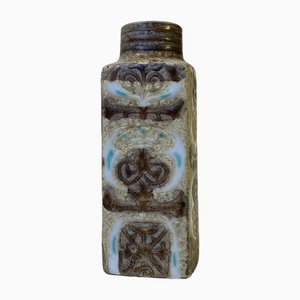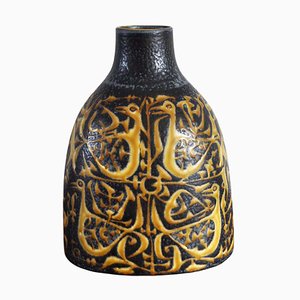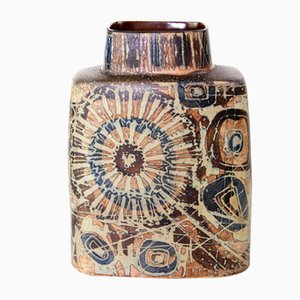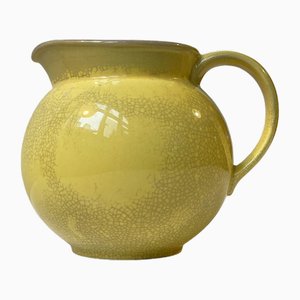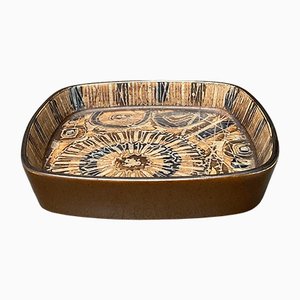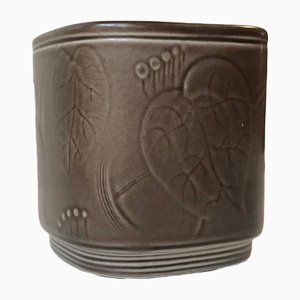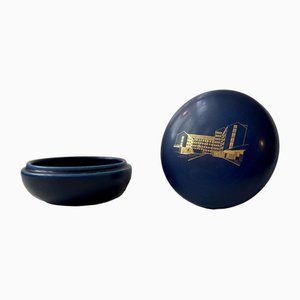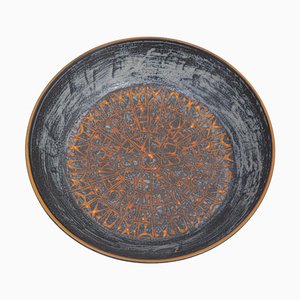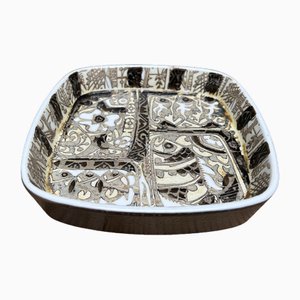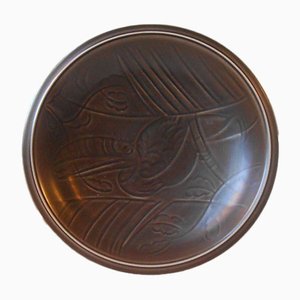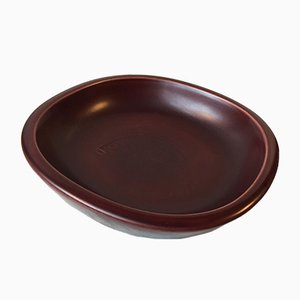
Swedish-Danish ceramic artist and designer Nils Johan Thorvald Thorsson (1898–1975) created a prolific body of work for the ceramics manufacturer Royal Copenhagen. His work is often presented as an exemplar of mid-century Danish modernism and is praised in the field of ceramic design.
Thorsson was born in Eslöv, Sweden in 1898. At the age of thirteen he apprenticed at the Alumina Factory in Copenhagen, before studying at and graduating from the Royal Danish Academy in 1917. Just over a decade later, he was appointed Artistic Director of Alumina in 1928, a post which he held for forty-one years. When Alumina purchased Royal Copenhagen in 1949, Thorsson stayed on as Artistic Director of the merged company, leading a team of talented designers which included Bethe Breyen, Kari Christensen, Johanne Gerber, Grete Helland-Hansen, Berte Jessen, Marianne Johnson, Inge Lise-Koefoed, Ellen Malmer, and Ivan Weiss, among others.
Thorsson’s work as a designer varied greatly theamatically, from the naturalistic featuring birds, fish, and butterfly motifs, to the abstract and geometric. During his time at Royal Copenhagen, Thorsson was the factory's most prolific designer, designing at least five of the best known production ranges for the company including Solberg (1930s); Marselis (Alumina, 1950s), which was an elegant, yet affordable line for everyday use; Tenera (1960s); Baca (1960s), which features highly detailed and complex relief patterns; and Diana (1970s), as well as many other pieces in glazes that are lesser known and harder to find on the vintage market. Both the Baca and Tenera Series featured forms designed by Thorsson himself, while other were a team effort. Objects and patterns by Thorsson are marked with his cypher on the base.
Thorsson passed away in 1975 in Copenhagen. Today, his mid-century earthenware designs are coveted by collectors and vintage lovers alike.

